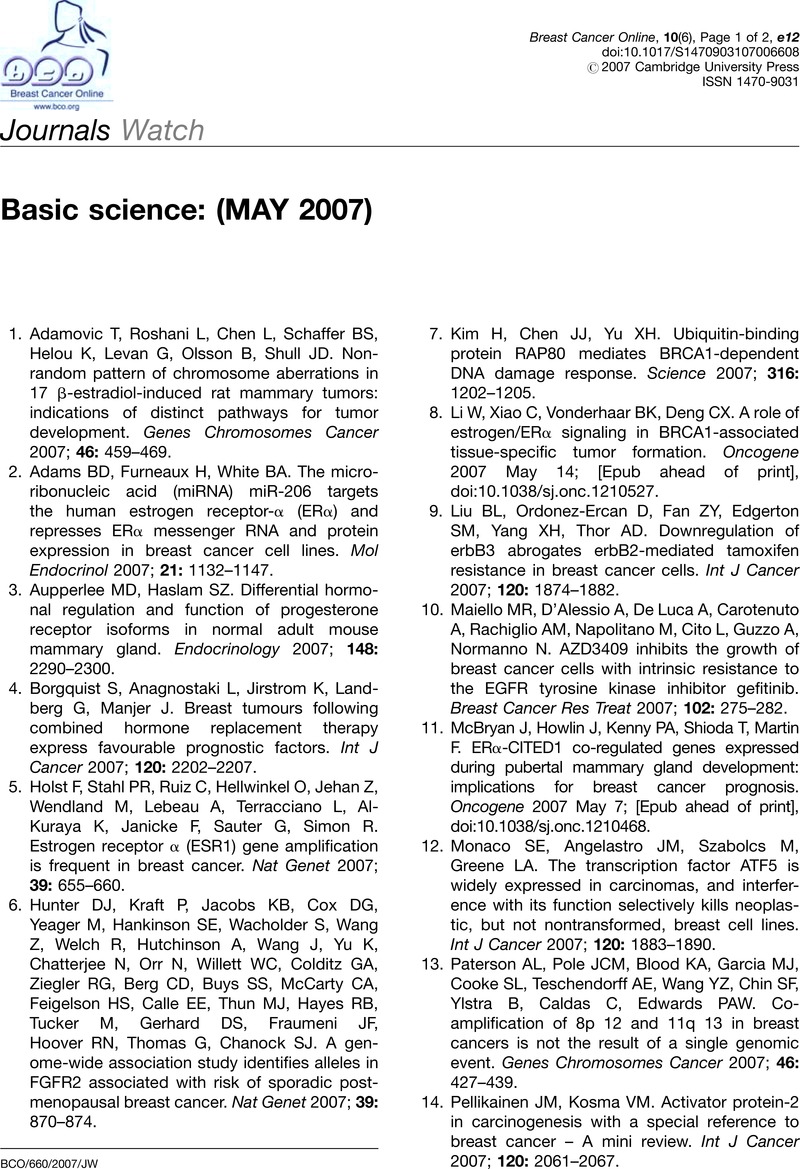11.McBryan, J,
Howlin, J,
Kenny, PA,
Shioda, T,
Martin, F.
ERα-CITED1 co-regulated genes expressed during pubertal mammary gland development: implications for breast cancer prognosis.
Oncogene 2007 May 7; [Epub ahead of print], doi:10.1038/sj.onc.1210468.
CrossRefGoogle ScholarPubMed 